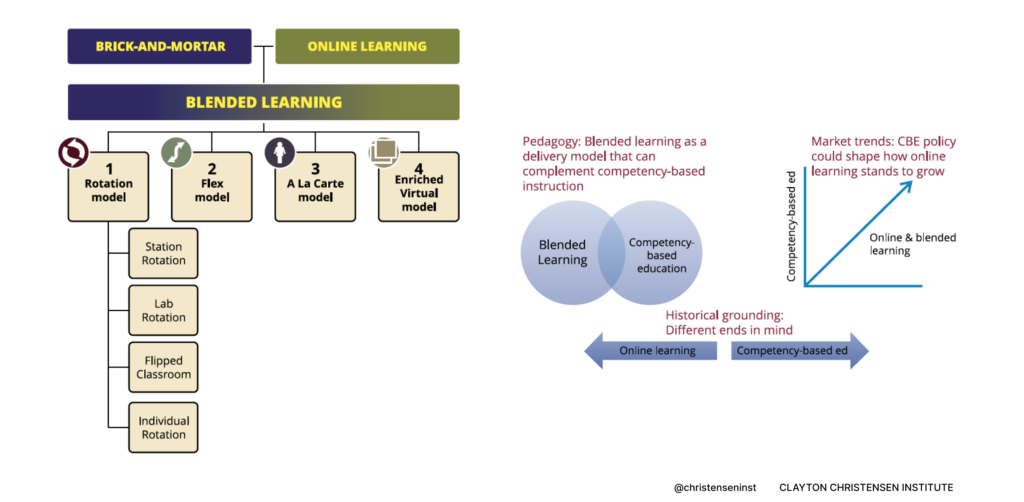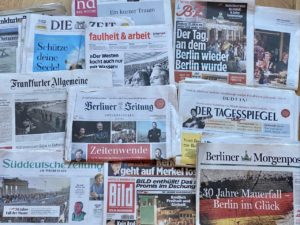UKRAINE
Studying Ukrainian and European History Through Active Learning
Author: Mykola Skyba
I. Overview
The methodological approach to the lesson – active and problem-based learning. Tools and framework – a blended learning method (mostly ‘rotation model’) (see APPENDIX). The teacher provides research tasks for the students which include the topic from the typical program, like the one transition topic, and assist students to break into small groups of 5-9. The students should read material on the topic independently. About 90% of the information related to the module will be delivered through a digital platform. The teacher will put together all relevant links and distribute them amongst the groups. The students then start working
II. Students’ age
9th – 11th grade
III. Objectives
Knowledge
- The students should know the chronological boundaries of political changes during the revolutions in the socialist states of Central and Eastern Europe; the key name and events such as “Perestroika”, the “Granite Revolution” in the USSR, the reunification of Germany, the division of Czechoslovakia, the civil war in Yugoslavia and the formation of newly independent states in the Balkans; the date of the Chernobyl disaster, the adoption of the Declaration of State Sovereignty of Ukraine.
- Students should understand the essence of the concepts: “democratic transit”, “acceleration”, “publicity”, “new thinking”, “parade of sovereignties”, “coup”, “referendum”, “Velvet Revolution”, “Autumn of Nations”, “Granite Revolution”, “shock therapy”.
Skills and ability
The students should be able to:
- Define their research/learning goals, draw up a step-by-step plan and maintain a clear focus.
- Think critically, distinguishing between facts and judgment.
- Collaborate successfully within a group.
- Work independently with historical sources and extract key figures and information.
- Draw their own conclusions and write a comprehensive essay.
- To speak in public.
Attitude
The student can:
- Define their own point view as a citizen.
- Value freedom of thought.
- Respect the dignity of others.
IV. Key concepts
The Declaration of the Independence of Ukraine was the result of the contemporary situation of forced consensus between the national-patriotic and communist factions in the Parliament of the USSR.
The economy of Ukraine between the market and state capitalism in the first years of independence.
‘State capitalism’ and political compromise give way to the emergence of an oligarchy which has shifted the balance of power and discredited the process of democratization in Ukraine.
The weakness of the state institutions overwhelmed by corruption increases the sense of insecurity within society.
The two-revolution movement, the “Orange Revolution” and the “Revolution of Dignity”, represented an uprising of the middle class demanding a return to the democratic agenda.
These modules cover the content of:
Section 5. “Revolutionary changes in Europe. Declaration of independence of Ukraine” the national curricula (the typical program “History: Ukraine and the World for 10th – 11th grades)* Particularly,
- a. The liberalization of social and cultural life. National movements. The rehabilitation of the oppressed and release of political prisoners. The establishment of a multiparty system and development of national movements. Ukrainian counterculture.
- b. Ukrainian society in the period of “perestroika”. The establishment of public initiatives in Ukrainian society. The “Declaration of Principles” of the Ukrainian Helsinki Union. The People’s Movement of Ukraine for Perestroika. Vyacheslav Chornovil. The move of parts of the Party nomenclature into national positions. The first alternative elections (1990). The “Declaration of State Sovereignty of Ukraine”. The “Granite Revolution”. The formation of a multiparty system.
Chapter 5.4. Everyday life. The national values and ideological orientations of the population of Ukraine: regional differences. Attitudes to labor and state property. The beginnings of private enterprise and increasing commercialization. Living standards among the population. The housing problem. Family life and everyday life: the conflict of generations.
- c. The Autumn of the Peoples: Revolutions in Central and Eastern Europe. Poland: ‘’Solidarity” and the Round Table Talks. Czechoslovakia: The Velvet Revolution. Yugoslavia: disintegration and civil war. The collapse of communist regimes in Hungary, Romania, and Bulgaria. The reunification of Germany.
Partly chapter 6 “Ukraine in the contemporary world”
6.2. Ukraine in a “multipolar” world. The growing role of the United States in international relations. Russia: between the desire for international influence and self-isolation.
6.3. European and Euro-Atlantic integration; The Schengen area. The Council of Europe; The Maastricht Treaty; The Formation of the European Union; EU enlargement and “neighborhood policy”; Euroscepticism.
*See at: https://history.vn.ua/pidruchniki/history-ukraine-and-world-11-class-2019-mudriy/
V. Key question
Imagine you have a ‘time machine’. You can travel back in time, but you can only change one detail? What is the detail you would change?
VI. Step-by-step description of the lesson
Structure of the lesson
- Overall number of units – 8.
- Method – Blended learning (see APPENDIX, p. 204).
- First lesson – introduction to the topic; explanation of the method and discussion with students.
- Next seven units: Each starts from a question by the students to the teacher. Then all together choose the 4-4 cases and provide analyses.
- One of the units worth focusing on is the key dilemma.
- Specific recommendations for the teacher: to encourage students to think out of the box; to respect the originality and independence of their conclusions.
- Use the articles, interviews, blogs, etc. from the “The Ukrainians”, “Ukraine Rozumna” (Smart Ukraine), “NV”, etc. of new and contemporary public intellectuals (include: Yaroslav Hrytsak, Yevhen Hlibovytsky, Volodymyr Yermolenko, Sergii Zhadan).
Description of the lesson
Examples of the topics:
- “Our Families’ Geography: Changes Over Time”
- “A Trick of the Memory”
- “Transition DJ set”
- Others – proposed by the students
“Our Families’ Geography: Changes Over Time”
Aim: To highlight and explain the connection between geopolitical changes in Europe and the world and individual mobility (based on the biography of the students’ families and/or close people; connect everyday life, individual and societal, to a wider history).
Sub-tasks:
- Draw a map of decades (digital or analog) with geotags and usual routes of travels and trips – on the weekend, during holidays, for study trips, as part of military service, business-trips, etc.
- Collect and combine the images with significant characteristics of the journeys.
- Create a record of stories about travel experiences and impressions.
Expected results: A leaflet, including an infographic, video presentation using original sources (publications, archive, field study etc.).
“A Trick of the Memory”
Aim: To understand how the human memory works and the influence of cognitive distortion on memory. To identify and avoid the problem of vague/false memories while working with historical issues.
Sub-tasks: Students records oral history segments (related to significant historical events) from eyewitnesses and compare this material with documentary evidence (part of it should be preselected by teachers, some discovered independently by students).
ACTIVITY 1:
- Discuss students’ personal geographies. Questions could refer to where they have travelled, with whom they communicate abroad, who their favourite travel bloggers are etc. (25 minutes)
- Mention the impact of the requirement to quarantine in the COVID-19 pandemic situation and the introduction of new barriers to cross-border movement (3 minutes)
- Ask what expectations students might have when travelling between countries (2 minutes)
- The teacher could point out that it is possible to look for the answers to these questions in history, and especially in the history of the transition period.
- A story about how the Iron Curtain affected the fate of families during the Cold War based on previously learned material.
Summary: The fall of the Berlin Wall, the policy of publicity and the rapprochement of the USSR with NATO members have dramatically changed this situation. However, the practice of building barriers to free movement remains. This is a common reaction to perceived threats. (15 minutes)
Students receive the following tasks:
- To work independently on the topic of revolutionary change in Central and Eastern Europe in the 1980s and early 1990s.
- To conduct mini-surveys and find out how the geography of travel changed from the late 1980s-2000s.
- To find out what socio-economic and political factors influenced the opening up of borders and what factors should be taken into consideration to predict the impact of these factors on the lives of students and their families in the next 3-5 years.
ACTIVITIES 2 & 3:
Students work in teams. The teacher provides mentoring. Classes can take place both at school in the classroom and/or remotely (in case of a deterioration of the epidemiological situation, and the joint decision of students). If teams work on school grounds, they can have meetings with the teacher for mentoring sessions. If teamwork takes place remotely, the teacher can schedule online meetings for each team.
ACTIVITY 4:
- Students present their work.
- Teachers can encourage creative forms of presenting the results, such as edited video plots (lasting up to 5 minutes), animations, infographics, mind maps, theatre performances, poster exhibitions, debates, and so forth.
- Such a teaching format gives students the opportunity to work with tools such as powertone, crello, etc.
APPENDIX
Model of Blended Learning by the Clayton Christensen Institute


